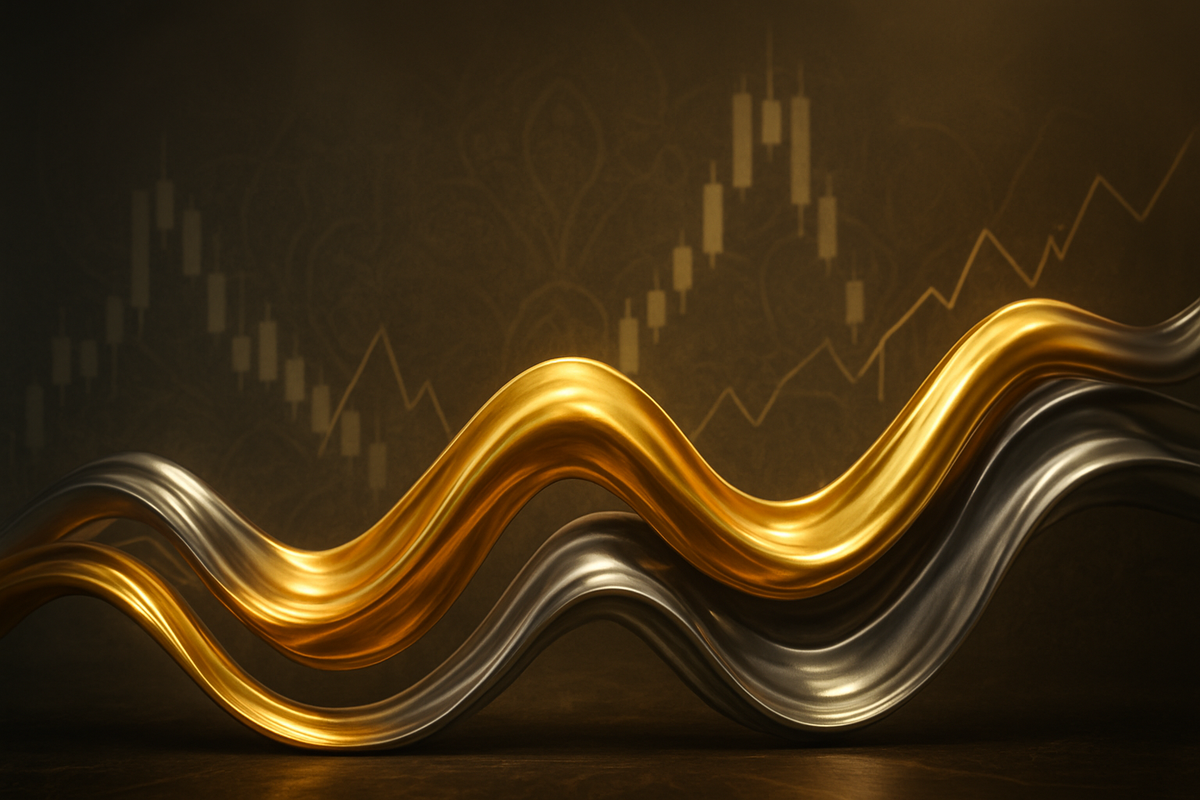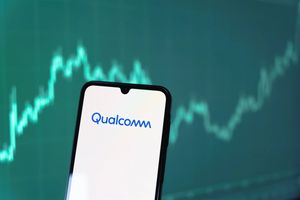
The shimmering allure of gold and silver has once again been put to the test, with precious metal prices experiencing a rollercoaster ride in late 2025. After a period of impressive gains, Indian cities have witnessed a notable slip in prices, mirroring a complex interplay of global economic factors, shifting monetary policies, and persistent geopolitical tensions. This volatility underscores the metals' dual role as safe-haven assets and commodities influenced by industrial demand, leaving investors and consumers alike navigating a landscape of uncertainty and opportunity.
The recent price corrections in India, following a brief but significant rally, highlight the sensitivity of the precious metals market to both international cues and domestic demand dynamics. While the broader trend for gold and silver in 2025 has been bullish, these short-term fluctuations are critical indicators of underlying market sentiment, profit-booking activities, and the ongoing re-evaluation of risk by market participants.
A Deep Dive into the Precious Metal Price Dynamics
The latter half of 2025 has been a period of intense activity for gold and silver markets, particularly in India. The narrative has been one of robust rallies punctuated by sharp, albeit often temporary, corrections.
In September 2025, gold prices in Indian cities demonstrated this volatility. On September 19, 24K gold in Chennai saw a rise of ₹80 per sovereign, reaching ₹81,840 (₹10,230 per gram), attributed to global trade tensions. This followed a previous day's decrease, showcasing the rapid shifts. Later in the month, around September 25, 24K gold prices in major cities like Mumbai, Delhi, and Bangalore corrected by ₹93 per gram, settling at approximately ₹11,444 per gram. This dip was largely seen as profit-booking after a strong festive-led run. Silver, too, saw significant swings; after surging by ₹3,000 per kilogram to ₹130,000 on September 9, it experienced minor declines in subsequent days, reflecting cautious sentiment.
October 2025 brought even more dramatic movements. Gold prices surged to an all-time high globally, with 24K gold in India reaching approximately ₹132,770 per 10 grams. However, this peak was followed by a notable slip. On October 19, gold's December futures contracts on the Multi Commodity Exchange (MCX) dropped by 2% to ₹127,320 per 10 grams. This correction was primarily driven by investor profit-booking amid a stronger US dollar and signs of easing US-China trade tensions. Silver experienced extreme global volatility in October, surging to an all-time high of $54 per ounce around October 16 before plummeting to $46.59 per ounce by October 27. In India, silver prices touched ₹190,000 per kilogram during this period, fueled by strong ETF demand and the Diwali rush.
As of early November 2025, the volatility continued. On November 7, gold prices across India, including Chennai, Mumbai, and Delhi, saw a minor decline, with 24K gold dropping by ₹55 to ₹12,202 per gram. Silver prices in India also showed a rise and then a dip, moving from ₹154 per gram on November 3 to ₹150.5 per gram on November 5, before a mild rebound.
The immediate reasons for these price movements are multifaceted. Profit booking by investors after significant rallies is a common driver of dips. Strong festive and wedding demand in India, particularly during seasons like Diwali and Dhanteras, provides crucial underlying support and can trigger price rises. The depreciation of the Indian Rupee against the US Dollar also plays a role, making imported gold and silver more expensive in local currency terms. Furthermore, global market trends, including shifts in the US Dollar's strength and the perceived easing or escalation of geopolitical tensions, directly influence international and, consequently, Indian precious metal prices. For silver, industrial demand from sectors like solar energy and electronics also contributes to its price dynamics.
Public Companies Navigating the Precious Metal Tides
The significant fluctuations in gold and silver prices have a profound impact on various public companies, creating both winners and losers across the mining, jewelry retail, and investment sectors.
Gold and Silver Mining Companies are often at the forefront of these impacts. Companies with efficient operations and lower All-in Sustaining Costs (AISC) are clear beneficiaries when prices rise. Higher metal prices translate directly into increased revenues, expanded profit margins, and stronger cash flows. For instance, major global gold producers like Newmont Corporation (NYSE: NEM), Barrick Gold Corp. (NYSE: GOLD), and Agnico Eagle Mines Ltd. (NYSE: AEM) have demonstrated exceptional profitability in Q3 2025, with margins exceeding 60% as gold prices hovered between $3,400-$4,000 per ounce. Silver producers such as Pan American Silver Corp. (NASDAQ: PAAS) and Hecla Mining Company (NYSE: HL) also stand to gain. This profitable environment has also spurred increased merger and acquisition (M&A) activity within the sector, validating earlier-stage exploration projects. Conversely, high-cost producers struggle even in a rising market, facing squeezed margins and operational challenges.
Jewelry Retailers face a more complex scenario. While they might experience short-term inventory revaluation gains, sustained high gold and silver prices tend to curb non-essential consumer demand. A significant price increase can trim purchase volumes by 5-7%. This forces a shift in consumer buying habits towards lighter, lower-carat, or studded jewelry, or even exchanges of old gold. Organized Indian retailers like Titan Company (NSE: TITAN) (with its Tanishq brand), Kalyan Jewellers India Ltd. (NSE: KALYANJEWEL), and Senco Gold Ltd. (NSE: SENCO) have shown resilience by adapting their offerings, focusing on lighter designs, and employing effective hedging strategies. However, many Indian jewelry stocks, excluding Titan, experienced significant declines in their stock performance year-to-date by October 2025, as investors sought alternative forms of gold investment. Smaller, unorganized retailers are particularly vulnerable to increased working capital requirements and cautious consumer sentiment.
Investment Firms offering precious metal products, especially Gold and Silver Exchange Traded Funds (ETFs), are significant winners. Strong inflows into these ETFs, such as SPDR Gold Trust (NYSEARCA: GLD) and iShares Silver Trust (NYSEARCA: SLV), translate into positive performance, with many funds delivering impressive returns. In India, Gold Loan Non-Banking Financial Companies (NBFCs) like Manappuram Finance Ltd. (NSE: MANAPPURAM) and Muthoot Finance Ltd. (NSE: MUTHOOTFIN) can also see increased loan disbursements as the value of pledged gold rises. However, the inherent volatility of precious metals presents risks for these firms and their clients, requiring careful risk management and diversification strategies.
Wider Significance and Market Implications
These price fluctuations in gold and silver are not isolated events but are deeply embedded within broader industry trends and global economic shifts. The current environment is characterized by a persistent bull market for precious metals, driven by structural factors rather than mere cyclical dynamics.
One of the most significant overarching trends is the global economic uncertainty and geopolitical tensions. Ongoing conflicts (e.g., Middle East, Russia-Ukraine), US-China trade relations, and domestic political instabilities (such as a protracted US government shutdown) continue to fuel investor anxiety, driving capital towards safe-haven assets. This environment has been exacerbated by the US Federal Reserve's monetary policy and interest rate expectations. Anticipated rate cuts make non-yielding assets like gold more attractive by reducing the appeal of fixed-income assets and potentially weakening the US dollar.
The US Dollar's strength or weakness remains a pivotal factor. As gold and silver are dollar-denominated globally, a weaker dollar makes them more affordable for international buyers, stimulating demand. Conversely, a strong dollar can exert downward pressure. The dollar index remaining below 100 since May 2025 has provided a supportive backdrop for precious metals. Furthermore, inflationary pressures continue to bolster gold and silver's traditional role as hedges against currency debasement.
A critical structural shift is the consistent and strategic central bank buying of gold. Central banks globally, including the Reserve Bank of India and those within the BRICS coalition, have been actively accumulating gold reserves as a move towards de-dollarization and diversification. For silver, its dual role as an industrial metal is increasingly important. Record demand from sectors like solar energy (photovoltaic cells), electric vehicles, and electronics is creating structural supply deficits, providing a solid floor for silver prices and often propelling them higher. This industrial demand, coupled with overall supply constraints in global silver production, exacerbates price surges.
Regulatory shifts, such as China's reform effective November 1, 2025, abolishing the value-added tax (VAT) exemption on gold sales, are also expected to influence gold's appreciation by recalibrating investor sentiment. Historically, precious metals have always served as a barometer of global stability and economic health. The current volatility, while unsettling, aligns with historical patterns seen during periods of high inflation, geopolitical unrest, and monetary policy shifts.
What Comes Next: Navigating the Future of Precious Metals
Looking ahead, the precious metals market is poised for continued dynamism, with both short-term challenges and long-term opportunities.
In the short-term, gold and silver prices are likely to remain sensitive to incoming economic data, central bank pronouncements (especially from the US Fed), and any de-escalation or intensification of geopolitical conflicts. Profit-booking after significant rallies will continue to introduce volatility. However, persistent global uncertainties and inflationary concerns are expected to provide underlying support, preventing any drastic or prolonged downturns. Investors should anticipate continued price swings, necessitating a nimble and informed approach.
For the long-term, the structural drivers supporting precious metals appear robust. The ongoing de-dollarization efforts by central banks, coupled with a sustained appetite for safe-haven assets amidst a fragmented global political and economic landscape, suggest a continued upward trajectory for gold. Silver, benefiting from both its safe-haven appeal and rapidly increasing industrial demand, particularly from the green energy transition, is expected to maintain its strong performance, with some analysts forecasting it to establish new trading ranges above $50 per ounce.
Companies in the precious metals sector will need to adapt strategically. Mining companies will continue to prioritize cost efficiency and explore M&A opportunities to enhance scale and reduce risk. Jewelry retailers, especially in price-sensitive markets like India, will need to innovate further in design, offer diverse product lines (e.g., studded, lower-carat, and alternative materials), and leverage digital channels to maintain consumer engagement. Investment firms will likely see sustained demand for gold and silver ETFs, prompting them to develop more sophisticated risk management and diversified precious metal investment products. Potential scenarios include further record highs if geopolitical tensions escalate or if major economies face deeper recessions. Conversely, a rapid resolution of conflicts or a stronger-than-expected global economic recovery could temper the pace of appreciation.
Comprehensive Wrap-up: A Glimpse into the Market's Future
The recent fluctuations in gold and silver prices, particularly the slip observed in Indian markets after a brief but strong rally, encapsulate the complex and interconnected nature of the global financial system. Key takeaways include the significant impact of profit-booking, strong domestic demand in India, and the overriding influence of global factors such as geopolitical tensions, central bank policies, and the strength of the US dollar.
Moving forward, the market for precious metals is likely to remain in a bullish trend, albeit with continued volatility. Gold's role as the ultimate safe haven, coupled with central bank accumulation, provides a strong floor. Silver's dual appeal as an investment and an indispensable industrial metal positions it for sustained demand, especially from the burgeoning green technology sector.
Investors should watch for shifts in central bank rhetoric, particularly regarding interest rates, as well as any significant developments in major geopolitical flashpoints. The performance of the US dollar will also be a critical indicator. For consumers, understanding these dynamics can help in making informed purchasing decisions, especially during festive seasons. The precious metals market in late 2025 and early 2026 is expected to be a testament to resilience, adaptation, and the enduring appeal of gold and silver in uncertain times.
This content is intended for informational purposes only and is not financial advice




